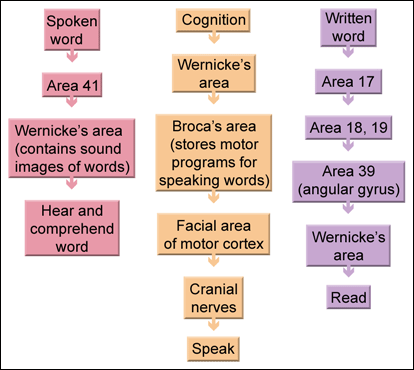Without the brain, there would be no language. The human brain has a few areas that are specific to language processing and production. When these areas are damaged or injured, capabilities for speaking or understanding can be lost, a disorder known as aphasia. These areas must function together in order for a person to develop, use, and understand language.
Language and the brain
The areas of the brain necessary for processing language: Broca's area, Wernicke's area, the primary motor cortex, the posterior middle temporal gyrus, and the middle and posterior superior temporal gyrus.
Broca's Area
Broca's area, located in the frontal lobe of the brain, is linked to speech production, and recent studies have shown that it also plays a significant role in language comprehension. Broca's area works in conjunction with working memory to allow a person to use verbal expression and spoken words. Damage to Broca's area can result in productive aphasia (also known as Broca's aphasia), or an inability to speak. Patients with Broca's can often still understand language, but they cannot speak fluently.
Wernicke's Area
Wernicke's area, located in the cerebral cortex, is the part of the brain involved in understanding written and spoken language. Damage to this area results in receptive aphasia (also called Wernicke's aphasia). This type of aphasia manifests itself as a loss of comprehension, so sometimes while the patient can apparently still speak, their language is nonsensical and incomprehensible.

Language and the brain
The areas of the brain necessary for language. Spoken word, cognition, and written word all are processed in different parts of the brain in different orders.
Auditory Cortex and Angular Gyrus
The primary auditory cortex, located in the temporal lobe and connected to the auditory system, is organized so that it responds to neighboring frequencies in the other cells of the cortex. It is responsible for identifying pitch and loudness of sounds.
The angular gyrus, located in the parietal lobe of the brain, is responsible for several language processes, including number processing, spatial recognition and attention.